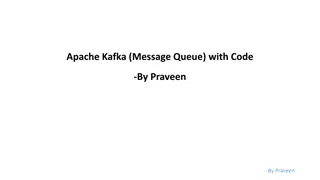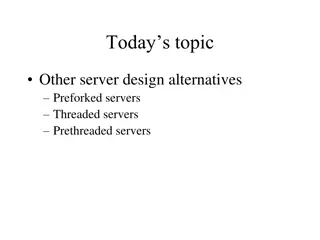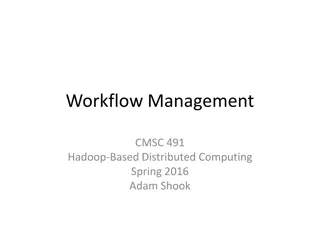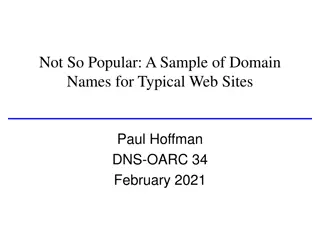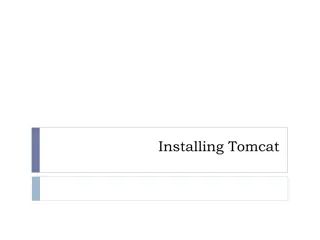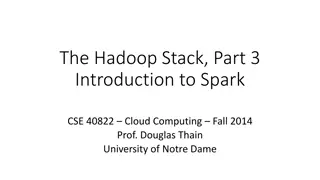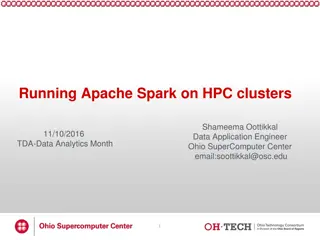Analyzing Break-In Attempts Across Multiple Servers using Apache Spark
Exploring cyber attacks on West Chester University's servers by analyzing security logs from five online servers using Apache Spark for large-scale data analysis. Uncovering attack types, frequency patterns, and sources to enhance security measures. Discover insights on break-in attempts and potential vulnerabilities for improved server protection.
Download Presentation

Please find below an Image/Link to download the presentation.
The content on the website is provided AS IS for your information and personal use only. It may not be sold, licensed, or shared on other websites without obtaining consent from the author. Download presentation by click this link. If you encounter any issues during the download, it is possible that the publisher has removed the file from their server.
E N D
Presentation Transcript
STUDYING BREAK-IN ATTEMPTS ACROSS MULTIPLE SERVERS USING APACHE SPARK AND SECURITY LOGS Tyler Clark & Kevin Codd
Introduction We sought to better understand cyber attacks on West Chester University s servers Understand types, frequency patterns, and sources of attacks Most information related to cyber-attacks is recorded in Linux system logs Analyzed the system logs of WCU CSC Department s five online servers Utilized Spark, a large-scale data analytical engine to conduct our analysis
Apache Spark Unified analytics engine for large-scale data Can conduct unified compute jobs on distributed data sets Functions using MapReduce Programming Framework Allows for future scaling of our security log data
Servers Bones Roadrunner Submitty Coyote Taz The web server for faculty and other department-related web pages. The web server for non- CS students to host pages for web development and design courses in the Information Technology program. Hosts the Submitty autograding server for several CSC courses. Available to CSC students for courses requiring a Linux environment. Available to CSC students for courses requiring a Linux environment. Has become obsolete and unused over the past few years but remains online as a potential backup solution for Taz.
Structure of a Log Date Time Server Process Message ((( Jan , 24 ), sshd[18558]: , submitty ), Failed password for invalid user basesystem from 206.189.173.15 port 44942 ssh2 )
Cleaning Logs User IP Port Failed password for invalid user [User] from [IP] port [Port] ssh2
The Result 5 million to 474 More observable Room for improvement
Attempted Means of Access SSH (Secure Shell Server) - Cryptographic protocol for remote login to a server Primary means of access for legitimate users Linux SSH process - handles incoming connections and user authentication via SSH protocol 4.9 million messages (97%) - vast majority of break-in attempts Pure-FTP and vsftp - File Transfer Protocols Means of transferring files to/from server 4372 messages(<0.1%) Included messages indicative of attacks attempting to identify whether servers have FTP up and unprotected
Type of Attacks Standard Authentication Errors: Servers are setup for authentication via password - most authentication errors stem from a failed password, also invalid username Injection Attack: An attempt to run malicious code through user-submitted strings. String of hexadecimal values, possibly representing malicious code that could be run if executed from memory - difficult to determine exact intent
Types of Attacks Evidence of Use of Username Dictionary: Users (most likely bots) were attempting to change their usernames during authentication:
Types of Attacks Attempts to Use Older SSH Versions: Attackers were searching for whether the server was using an older version of SSH, most likely to use some exploit that was patched out in later versions. File Transfer Protocol Attacks: Attempts to access server via FTP as anonymous user
What We Considered an Attack Our Definition: When an SSH connection fails Failed password Invalid username
Grouping Messages Key Date Process Server Value Message
Conclusions We gained a novel awareness of the types, frequency, and origins of attacks on our department s servers We established a scalable framework for future analysis





